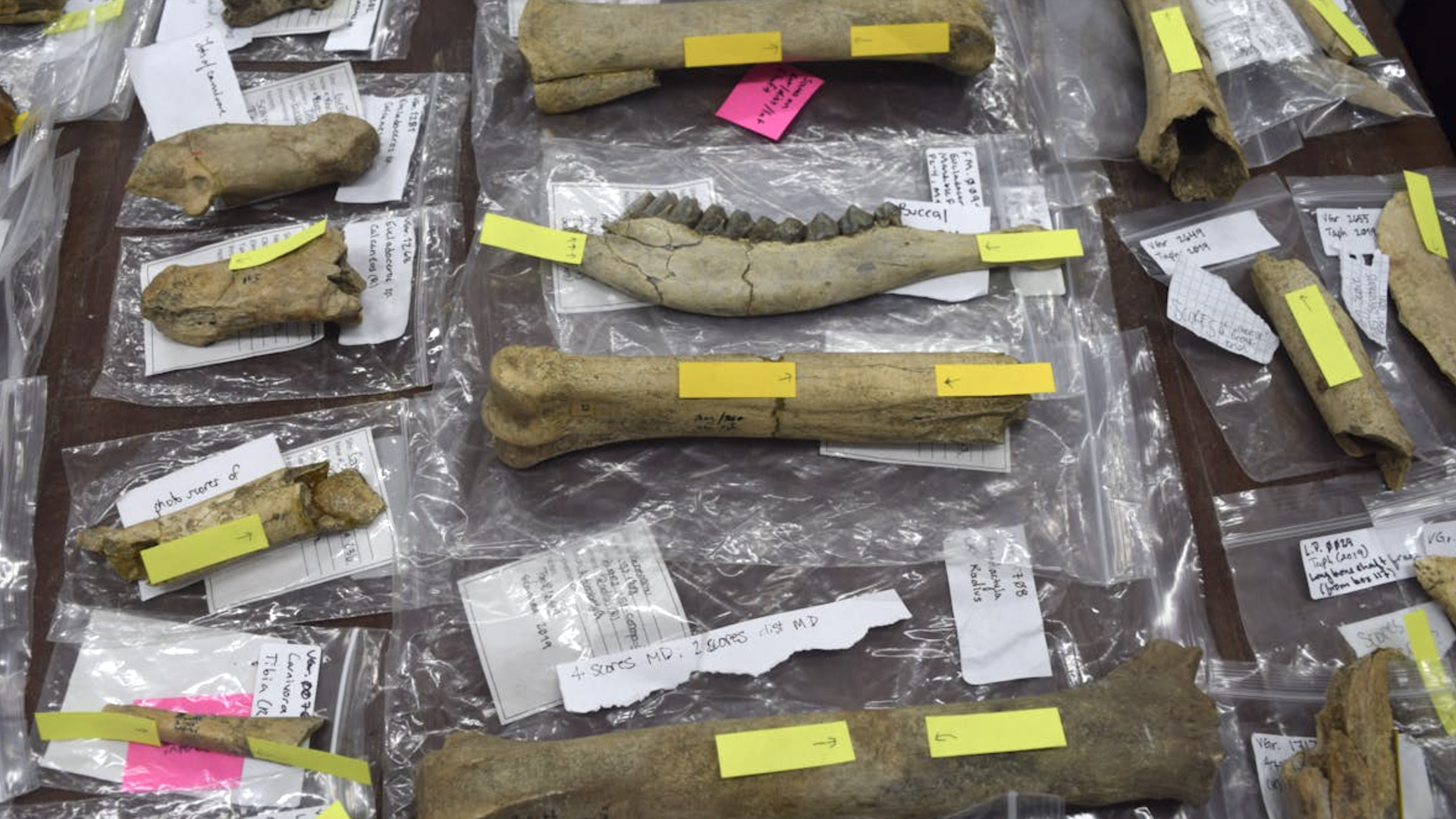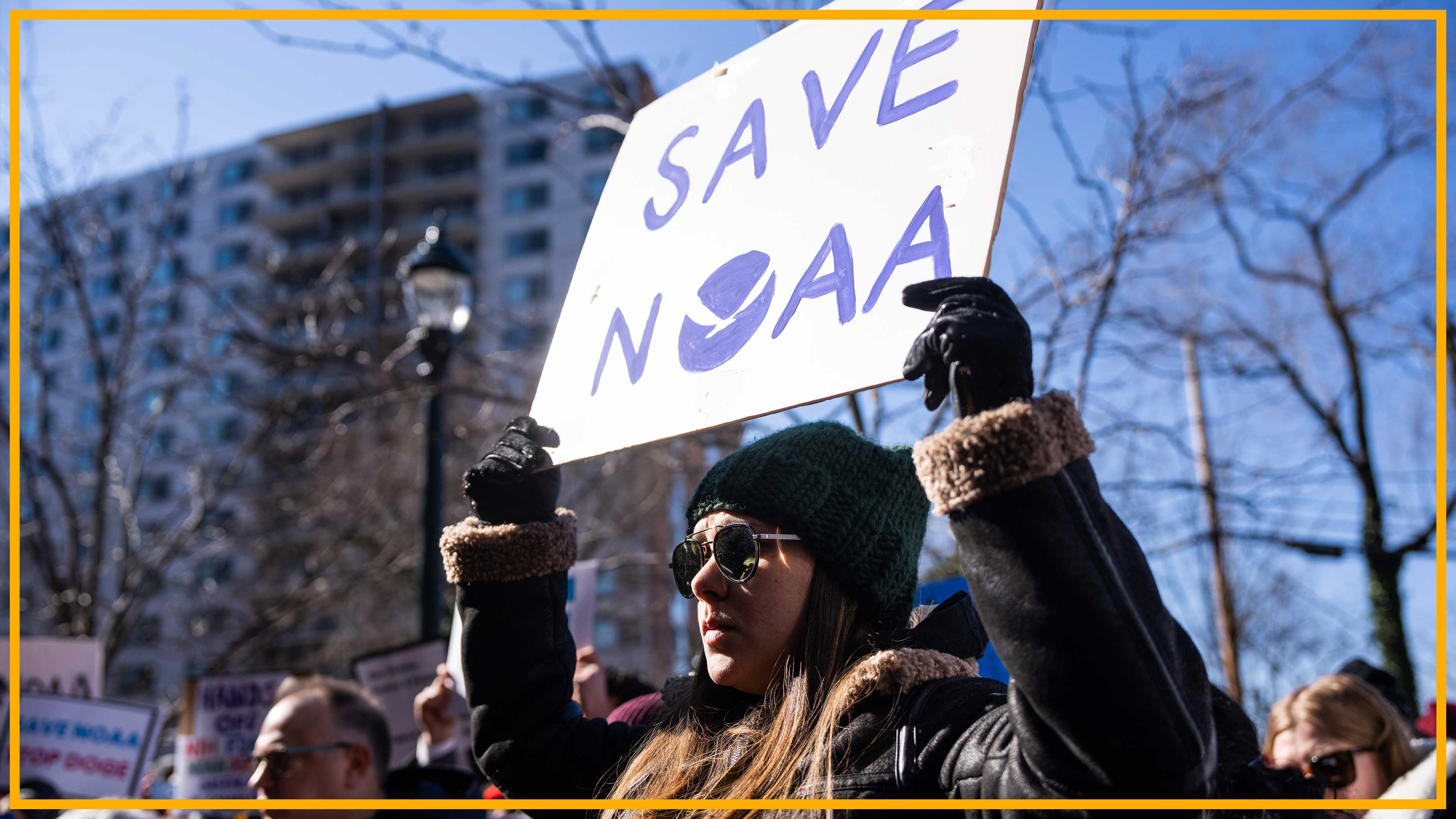
Is the Bermuda Triangle really dangerous?
Superstitions have dogged the Bermuda Triangle, but its story isn't really all that mysterious.
A vaguely defined expanse of the Atlantic Ocean triangulated between Puerto Rico, Florida and Bermuda has enjoyed a rather sinister — though perhaps largely unearned — reputation for decades.
Dubbed the Bermuda Triangle, this area has been linked to a number of mysterious disappearances dating back to 1945, when a squadron of five U.S. Navy aircraft on a training mission vanished without a trace.
What, exactly, happened to those planes — and to the ships and aircraft that supposedly went missing in the Triangle since then — is a matter of much speculation, with popular theories that run the gamut from the supernatural to science fiction.
Gallery: Lost in the Bermuda Triangle
However, records kept by the Aviation Safety Network and the U.S. Coast Guard (USCG) indicate that many of these disappearances can be linked to storm activity in the area, or to unsafe conditions on the vehicles themselves.
On the USCG website, the answer to the frequently asked question, "Does the Bermuda Triangle really exist?" is the statement, "In a review of many aircraft and vessel losses in the area over the years, there has been nothing discovered that would indicate that casualties were the result of anything other than physical causes."
In other words, normal ocean processes and simple human error are the likely culprits, and the Bermuda Triangle is no more mysterious, suspicious or dangerous than any other stretch of open ocean.
Down in the depths
Earth's seas cover approximately 70% of the planet, reaching depths of about 12,100 feet (3,700 meters) on average, and up to 36,200 feet (11,000 m) at the deepest point, according to the National Ocean Service.
The seas contain approximately 321 million cubic miles (1,338 cubic kilometers) of water, so it's no wonder that boats and airplanes can seemingly disappear into them and leave no sign of their passing.
In 1964, a reporter named Vincent Gaddis dubbed the roughly 500,000-square-mile (1.3 million square kilometers) zone off the southeastern U.S. Atlantic coast "the Bermuda Triangle." Gaddis came up with the title for a story that appeared in the pulp magazine Argosy describing the unexplained 1945 disappearance of Flight 19 — five Navy planes with 14 crewmembers aboard.
Another Navy aircraft with a 13-person crew that was sent to search for the missing Flight 19 also never returned, according to reporter and U.S. Navy veteran Howard L. Rosenberg, who wrote about the Bermuda Triangle in an article for the Naval History and Heritage Command (NHHC).
Rosenberg said the Flight 19 pilots likely became lost and then ran out of gas. If they crashed, the heavy planes probably would have broken up on impact and sank, and the water would have been too cold for the crew to last very long, even if they survived the crash.
And the rescue plane was a PBM Mariner, an aircraft model commonly referred to as a "flying gas tank" because it was so flammable. The possibility that the rescuers met a fiery accident of their own is high, Rosenberg suggested.
Since then, rumors about the Triangle have grown significantly, but the number of disappearances in the high-traffic area is not notably higher than in other well-traveled parts of the ocean.
"The triangle area happens to be one of the most heavily traveled regions in the world, and the greater the number of ships or planes, the greater the odds that something will happen to some," Rosenberg wrote. [5 Real Hazards of Air Travel]
Stormy weather
Tropical storms and hurricanes are also common in this region of the Atlantic, which could account for many of the reported disappearances that have happened over the years in the Bermuda Triangle, according to the National Oceanic and Atmospheric Administration (NOAA).
Ships passing through the area in the past would have been more vulnerable to sudden and extreme changes in the weather than vessels today, which have access to more accurate forecasts, NOAA officials said in a statement.
Brief yet violent thunderstorms called meso-meteorological storms, which can also spring up at sea without warning, could have also played a part, disrupting ship communications and stirring up enormous waves, Rosenberg said.
The presence of many islands dotting the Caribbean Sea creates expanses of shallow water that could also spell trouble for large ships, the NOAA statement added. And if an accident were to occur, sharks and barracuda would make short work of bodies in the water, while the swiftly flowing Gulf Stream would quickly disperse any evidence of wreckage from the site of a crash or explosion.
"The ocean has always been a mysterious place to humans, and when foul weather or poor navigation is involved, it can be a very deadly place," NOAA officials said in a statement. "There is no evidence that mysterious disappearances occur with any greater frequency in the Bermuda Triangle than in any other large, well-traveled area of the ocean."
Maybe methane?
Still, superstitions about the Triangle's "powers" have proven to be remarkably resilient and continue to loom in the public imagination. Some superstitions have even taken root recently, based on new geological discoveries.
In March 2015, research detailed a collection of craters in the Barents Sea off the coast of Norway. The study's authors suggested that these craters might have been caused by ancient methane explosions released after the end of the last ice age, 11,700 years ago. These "blowouts" happened when warming ocean temperatures led pressure to build up and methane to be released from gas hydrates, the solid icelike substance formed by gases combined with frozen water.
Some media coverage of the research suggested a link to the Bermuda Triangle, proposing that sudden and violent methane blasts could create sinkholes or form gas bubbles that would swiftly disable and sink ships. However, according to Carolyn Ruppel, a research geophysicist and chief of the U.S. Geological Survey's Gas Hydrates Project, that explanation is highly improbable.
"We do know that you see methane coming from the seafloor now that's pretty widespread," Ruppel told Live Science. But while slow methane leakage is common in the ocean, large-scale blowouts like those that may have taken place when the ice age wound to a close haven't been recorded since, she said.
When gas hydrates break down, Ruppel added, they don't break down explosively unless there's a buildup of extreme pressure — of the type that can happen as a result of dramatic climate change, and then only in parts of the ocean where the water is shallow enough that the gas hydrates would be affected by changes in water temperature, such as the area in the Barents Sea where the craters were found.
In fact, most of the methane that's seeping into the ocean today is processed by microbes into carbon dioxide long before it reaches the surface. "So don't expect any big catastrophes in the next few centuries," Ruppel said.
Originally published on Live Science.
Sign up for the Live Science daily newsletter now
Get the world’s most fascinating discoveries delivered straight to your inbox.

Mindy Weisberger is an editor at Scholastic and a former Live Science channel editor and senior writer. She has reported on general science, covering climate change, paleontology, biology and space. Mindy studied film at Columbia University; prior to Live Science she produced, wrote and directed media for the American Museum of Natural History in New York City. Her videos about dinosaurs, astrophysics, biodiversity and evolution appear in museums and science centers worldwide, earning awards such as the CINE Golden Eagle and the Communicator Award of Excellence. Her writing has also appeared in Scientific American, The Washington Post and How It Works Magazine. Her book "Rise of the Zombie Bugs: The Surprising Science of Parasitic Mind Control" will be published in spring 2025 by Johns Hopkins University Press.










